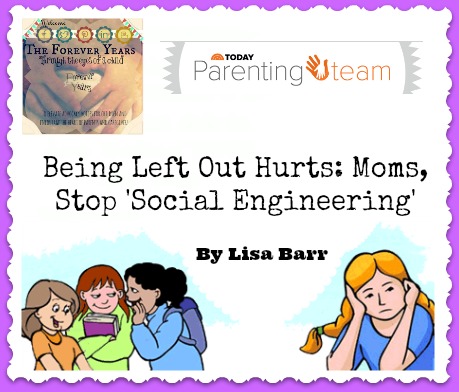I remember walking into the cafeteria of my new school and it was like someone punched me in the stomach. I was in sixth grade. My family had just moved from Virginia to Ohio. At first, I attended the local Catholic school. Within the first two months, I was begging my parents to go to the public school because the girls were so mean. And when I look back, wow, they were cruel. My maiden name is Ackerman. They’d call me “Lisa Acneman” as sixth grade brought with it oily skin and some breakouts. When my parents discerned that I would change schools, I felt relieved. I won’t even tell you about the last day at school there when all the girls knew I was leaving.
Off to public school I went. But soon I was to find out that it didn’t matter whether I went to parochial or public school.
Instantly a group of girls took me in. They invited me to sit at their lunch table. Little did I know that they had kicked another girl off the table so I could sit with them. I was so grateful to have friends. I was a bit naïve. Maybe that’s because I grew up in a home where we were all out for each other and my assumption going “out into the world” was that everyone was like that, too.
Then one day, I walked into the cafeteria. I nearly dropped my brown paper lunch bag. I looked at the table where I had been sitting for the last week. My first week at school. I counted the number of girls at the table – eight. Eight was the maximum number of people who could sit at one table. The two girls who were the “leaders” looked at me, whispered to the other girls at the table, and everyone turned around to laugh at me.
My heart sank. I actually went up to the table and feebly asked, “Is there space for me here?” Hoping maybe I was wrong, that it wasn’t as it seemed. I couldn’t feel my feet beneath me. I felt dizzy. I swear my heart was going to jump out of my chest.
I can’t remember what they said, but I must have gotten the picture because I turned and I quickly looked around for a place to sit. It was a small cafeteria and soon someone would notice me. I didn’t want anyone to look at me. My ears were ringing, my hands were clammy, my heart was beating so fast. I felt the eight girls’ snickering whispers like daggers in my back. There was no “physical fight” or blow up so the teachers on lunch duty were none the wiser. I saw a table with no one at it. So I sat down. I wanted to cry. But I didn’t.
 This is where I sat for two months. Alone. By myself.
This is where I sat for two months. Alone. By myself.
Once, a male teacher came up to me after whispering to another teacher, with a sympathetic, pleading look on his face and asked me something I can’t remember now. But I didn’t see him as a resource.
I know that eventually I sat somewhere with some group. For the next two years that we lived in Ohio, I had some good experiences. I still have a friend from there who is one of my best friends. But the two girls continued to be bullies. Yes, that’s what I can call it now as I understand as a psychotherapist and adult what was really going on. They were the kind of “friend” who would invite you over and you’d feel like “Oh good! We are friends again!” Only to have them talk about you or put you down.
We have all had experiences like this where other girls have been mean to us. Just the other day, another mom friend of mine told me that she waved to two moms talking and they looked at her and laughed. It happens in childhood. It can happen between adult women.
As a psychotherapist, I intimately know that when someone hurts others it’s because they are hurting. I have counseled both the bully and the one being bullied.
(To read more of this article, please follow the link below…)
Raising Girls who are Includers instead of Mean Girls, by Lisa McCrohan































